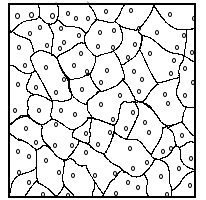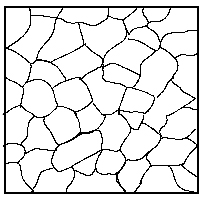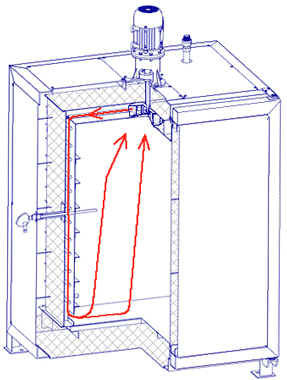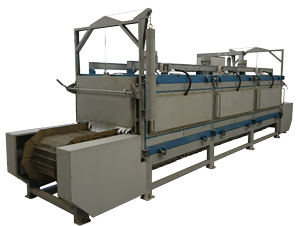Heat treatment of aluminum alloys
The main types of heat treatment
The purpose of this article is to consider possible options for using equipment for various types of heat treatment of products from aluminum alloys. This article does not cover equipment for producing castings and gas-fired furnaces..
Heat treatment of aluminum alloys is carried out to obtain the required structure and, accordingly, mechanical properties, as at the stage of the blank, and already in finished products.
For heat treatment, there are five main types of manipulations with their inherent heating and cooling methods. To obtain the desired physical properties, one or another type of heat treatment is used..
Annealing of the first kind
Designed to relieve casting or thermal residual stresses, remove work hardening, with such heating, phase transformations do not occur in the metal structure.
Annealing of the second kind
Designed to change the structure of the material by recrystallization. The workpieces are heated above critical temperatures and cooled slowly. As a result, the size of the grains, their shape, and the distribution of particles of the second phases change..
Hardening of aluminum alloys is designed to fix non-equilibrium (metastable) structural states. A freshly hardened product is soft, like after annealing steels, it can be deformed. But after 4-6 days, the metal self-hardens.
 |
 |
| Initial structure before quenching | Structure after quenching |
Diagram of the change in the structure of an aluminum alloy containing 4% Cu (after quenching)
Vacation (aging) is intended to give the desired properties to products. Depending on the temperature, hardening or softening occurs.

General information about ovens
Distinctive features of aluminum alloys, such as significantly higher heat capacity, heating accuracy within ± 3C, thermal conductivity, structure, melting temperature, alloying concentration do not always allow the use of electric furnaces for heat treatment of steels. These features must be taken into account when choosing equipment for heat treatment of aluminum-based alloys. For heat treatment of aluminum alloys, low-temperature furnaces are used, a characteristic feature of which is the transfer of most of the heat to the heated products enhanced convection , therefore, powerful fans mixing gas in the furnace and distributed convection flow direction. Depending on the type of production of electric furnaces, there may be periodic (cage type) and continuous action (checkpoint).
Chamber electric fixed hearth furnaces annealing, quenching, aging of small and medium parts are applied in small and medium-scale production. The advantage of such ovens is availability and reliability. The disadvantage is the lack of mechanization.
Chamber electric bogie hearth furnaces are used for heat treatment of large-sized castings, profiles, forgings predominantly for annealing, tempering or aging, etc. The advantages of such furnaces are the ability to load large batches of billets. The lack of such designs, in large occupied areas. In the case of using such furnaces, it is difficult to carry out the hardening operation due to cooling blanks during the rolling out of the hearth and unloading.
Mine electric furnaces widely used for heat treatment of shaped castings. These furnaces occupy a minimal area of the workshop and have a relatively high productivity than chamber furnaces.
A wide range of special ovens. Vertical electric furnace for profile hardening. Heating for drying after dyeing.
A bogie hearth furnace for quenching suspended sheets, here a quenching tank is placed below the hearth.

Conveyor electric furnaces are widely used for heat treatment of alloys. Pusher or roller conveyor furnaces. Here the workpieces are loaded into a container, which is pushed along the guides or rolled through the entire heat chamber. The advantage of continuous furnaces is that they are easily connected by other installations into units and lines. These furnaces are used, as a rule, in large-scale production.
Design features of annealing installations
After initial heating, for some types of annealing, a fixed cooling rate is required, less than in air. To do this, the oven must have holes that can be closed during heating and holding. During cooling, parts with the oven, these holes open slightly and through them the air blown in by the fan enters.
Design features of thermal equipment for hardening aluminum alloys
Heating for hardening of parts is a critical operation, and its successful implementation depends mainly on the uniform temperature distribution in heating chamber and the possibility of its regulation within limited limits (±3℃) . The temperature range for hardening is 500-550 ℃ . If the metal is overheated, then a liquid phase is formed along the perimeter of the grains, shrinkage occurs, microporosity appears, with a significant decrease in strength and plasticity. Heaters should be located in flow channels. The "Termodat" device controlling heating must have a mechanism for temperature reduction (fine adjustment) in the range 480-530 & # 8451; that will provide the necessary heating accuracy for hardening (± 3 & # 8451;).
Features of heat treatment techniques
After heating and holding, the workpieces must be moved from the furnace to the quenching tank as quickly as possible, no longer than 5-7 seconds. Cooling should be done as intensively as possible. It is necessary to start cooling from the holding temperature. This means that the time for transferring parts from the heating furnace to the quenching tank (water) should be minimal, this can be achieved by mechanization transferring the charge to the quenching tank. The quenching tank must have a powerful water mixing system, a large capacity of the cooling heat exchanger.
Difference of hardening of aluminum alloys, relative to steels in that they do not gain hardness immediately, but gradually, over several days at room temperature. The effect of increasing the hardness after quenching is called aging. In practice, the aging process is reduced in time by heating to 160 ° C and holding for 4-10 hours in a special chamber. Some grades, mainly complex alloyed ones, do not gain the required hardness and strength at room temperature. For such materials, it is necessary to adjust the heating values for aging to optimal values. LLC "NPP Stankomatika" can manufacture electrothermal equipment for heat treatment of the required performance with the desired level of automation or complete set.
(the territory of JSC "Ural plant RTI")


